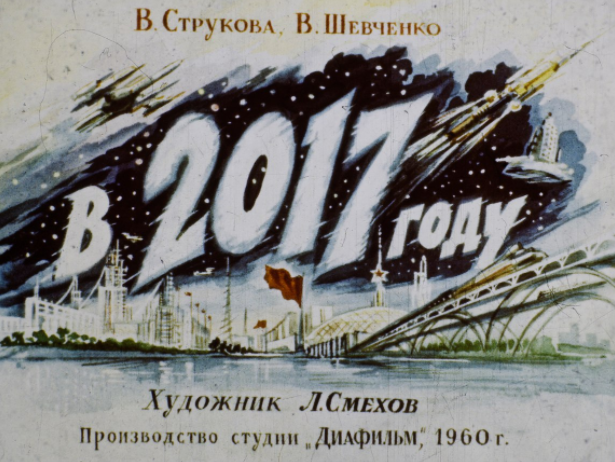1960s Soviet filmstrip shows USSR's victory over the West and predicts FaceTime and self-driving cars
A vision of life in 2017 shows remarkable prescience about today’s transport and mobile connectivity

Your support helps us to tell the story
From reproductive rights to climate change to Big Tech, The Independent is on the ground when the story is developing. Whether it's investigating the financials of Elon Musk's pro-Trump PAC or producing our latest documentary, 'The A Word', which shines a light on the American women fighting for reproductive rights, we know how important it is to parse out the facts from the messaging.
At such a critical moment in US history, we need reporters on the ground. Your donation allows us to keep sending journalists to speak to both sides of the story.
The Independent is trusted by Americans across the entire political spectrum. And unlike many other quality news outlets, we choose not to lock Americans out of our reporting and analysis with paywalls. We believe quality journalism should be available to everyone, paid for by those who can afford it.
Your support makes all the difference.B 2017 godu (In the Year 2017) produced at the Diafilm studio in Moscow in 1960, depicts a world in which Siberia and Alaska are connected by a high-speed, atomic-powered trains on a rail link over the Bering Strait, using a double-decker bridge.
The filmstrip loosely follows the story of a boy named Igor enjoying all the achievements of the USSR nearly a century after its creation, notably the travel possibilities.
Transport was arguably the greatest success of the Soviet era. The sprawling confederation was bound together by electrified railways, while Aeroflot was the world’s biggest airline until the collapse of the USSR. Yet the filmstrip suggests that revolutionary fervour could have produced even more ambitious transportation links.
In the filmstrip, an “International Metro Network” has been established along the far north of Eurasia, connecting cities and communities along the Arctic Ocean. The far north of Siberia is also connected via a series of ship canals with the Aral and Caspian Seas in the south.
Some predictions are remarkably accurate, such as a frame showing a live video link between Igor’s home and a cruise ship on the Black Sea – foreseeing technology such as Skype and FaceTime.
There is also an image which appears to feature autonomous cars. But there is no concept of Google maps nor tablet computers, with abundant depictions of newspapers and paper maps.
The filmstrip has 45 frames. At a time when projectors were in short supply in the Soviet Union, filmstrips provided an effective means of education – and propaganda.
Join our commenting forum
Join thought-provoking conversations, follow other Independent readers and see their replies
Comments